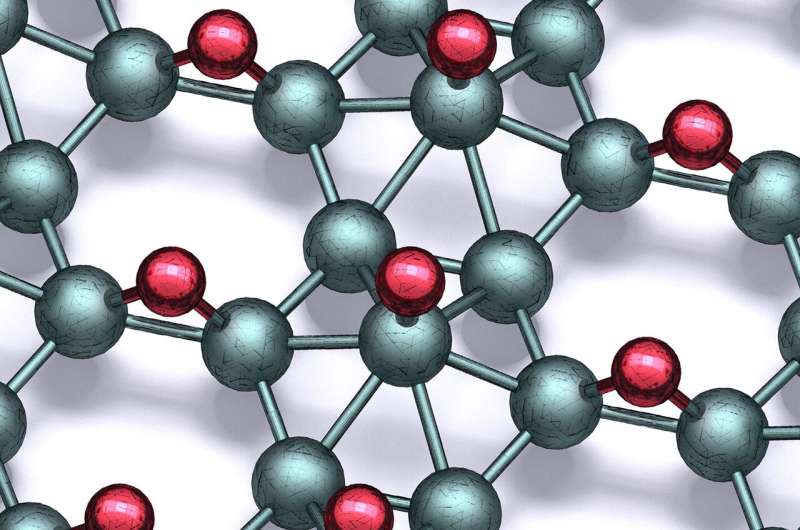
Northwestern University researchers have, for the first time, created borophane—atomically thin boron that is stable at standard temperatures and air pressures.
Researchers have long been excited by the promise of borophene—a single-atom-thick sheet of boron—because of its strength, flexibility and electronics properties. Stronger, lighter and more flexible than graphene, borophene could potentially revolutionize batteries, electronics, sensors, photovoltaics and quantum computing.
Unfortunately, borophene only exists inside of an ultrahigh vacuum chamber, limiting its practical use outside the lab. By bonding borophene with atomic hydrogen, the Northwestern team created borophane, which has the same exciting properties as borophene and is stable outside of a vacuum.
“The problem is that if you take borophene out of the ultrahigh vacuum and into air, it immediately oxidizes,” said Mark C. Hersam, who led the research. “Once it oxidizes, it is no longer borophene and is no longer conductive. The field will continue to be hindered in exploring its real-world use unless borophene can be rendered stable outside an ultrahigh vacuum chamber.”
The research will be published March 12 in the journal Science and featured on the cover (“Synthesis of borophane polymorphs through hydrogenation of borophene”). The study marks the first time scientists report the synthesis of borophane.
Hersam is the Walter P. Murphy Professor of Materials Science and Engineering at Northwestern’s McCormick School of Engineering and director of the Materials Research Science and Engineering Center.
Although borophene is frequently compared to its super-material predecessor graphene, borophene is much more difficult to create. Graphene is the atomically thin version of graphite, a layered material comprising stacks of two-dimensional sheets. To remove a two-dimensional layer from graphite, scientists simply peel it off.
Boron, on the other hand, is not layered when in bulk form. Five years ago, Hersam and collaborators created borophene for the first time by growing it directly on a substrate. The resulting material, however, was highly reactive, making it vulnerable to oxidation.
“The boron atoms in borophene are highly susceptible to further chemical reactions,” Hersam said. “We found that once the boron atoms are bonded with hydrogen, they will no longer react with oxygen when in open air.”
Now that borophane can be taken out into the real world, Hersam said researchers will be able to more rapidly explore borophane’s properties and its potential applications.
“Materials synthesis is a bit like baking,” Hersam said. “Once you know the recipe, it’s not hard to replicate. However, if your recipe is just a little off, then the final product can flop terribly. By sharing the optimal recipe for borophane with the world, we anticipate that its use will rapidly proliferate.”
More information:
“Synthesis of borophane polymorphs through hydrogenation of borophene” Science (2021). science.sciencemag.org/cgi/doi … 1126/science.abg1874
Citation:
Scientists stabilize atomically thin boron for practical use (2021, March 11)
retrieved 11 March 2021
from https://phys.org/news/2021-03-scientists-stabilize-atomically-thin-boron.html
This document is subject to copyright. Apart from any fair dealing for the purpose of private study or research, no
part may be reproduced without the written permission. The content is provided for information purposes only.